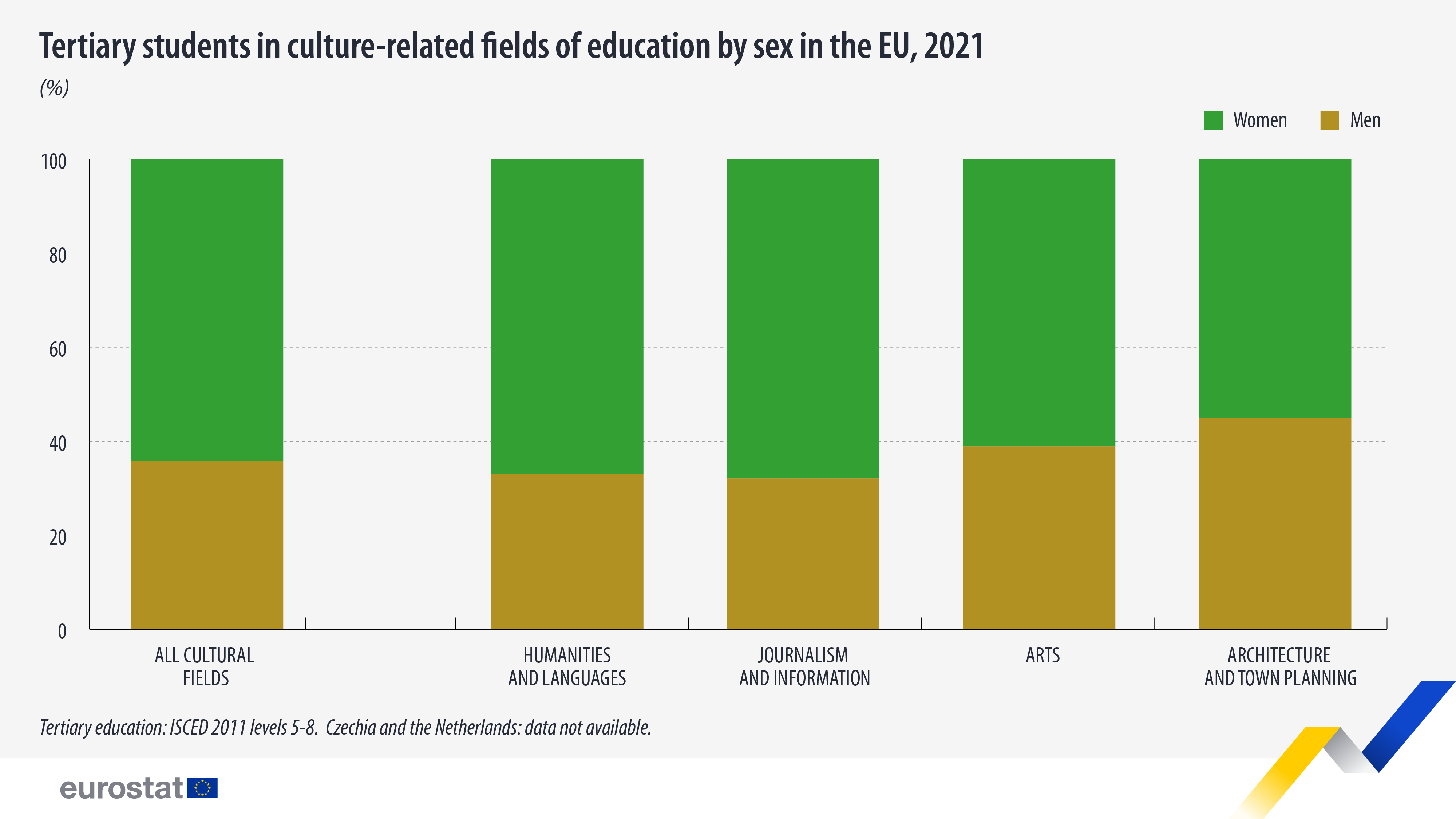EU cultural studies 2021: women lead, humanities top

In 2021, there were around 2.6 million tertiary students in the EU studying in culture-related fields, corresponding to 14% of all tertiary students in the EU.
Source dataset: educ_uoe_enrt03
Across the EU countries, the largest share of tertiary students in culture-related fields of education was recorded in Italy (20%), followed by Sweden (17%) and Estonia (16%).
The largest number of students in culture-related fields pursued humanities and languages (50%), followed by arts (27%), journalism and information (10%), and architecture and town planning (9%).
Women dominate tertiary education in cultural fields
In 2021, there were more female than male tertiary education students in the EU studying culture-related fields (64% compared with 36%).
Source dataset: educ_uoe_enrt03
The share of women was markedly higher among those studying journalism and information studies (68%), humanities and languages (67%), and arts (61%). Meanwhile, the gap was less pronounced for those studying architecture and town planning, where 55% of students were female.
In light of the 2023 European Year of Skills, these statistics provide valuable insights for policymakers about the distribution of culture-related studies among the EU's tertiary students and the potential implications for skills application and job market trends.
For more information
- Statistics Explained article on culture statistics - culture-related education
- Online publication on culture statistics
- Thematic section on culture
- Database on culture
Methodological notes
- Tertiary education: ISCED 2011 levels 5-8.
- Culture-related fields of education:
- arts (fine arts, music and performing arts, audio-visual techniques and media production, design, craft skills);
- humanities (religion, foreign languages, history and archaeology, philosophy and ethics);
- journalism and information (journalism and reporting, library, information, archiving); and
- architecture and town planning.
- Czechia: data not available.
- Sweden: definition differs.
- The Netherlands: data are limited to the overall number of students in the arts and humanities fields of education. Detailed data broken down by the different culture-related fields are not available.
If you have any queries, please visit our contact us page.

